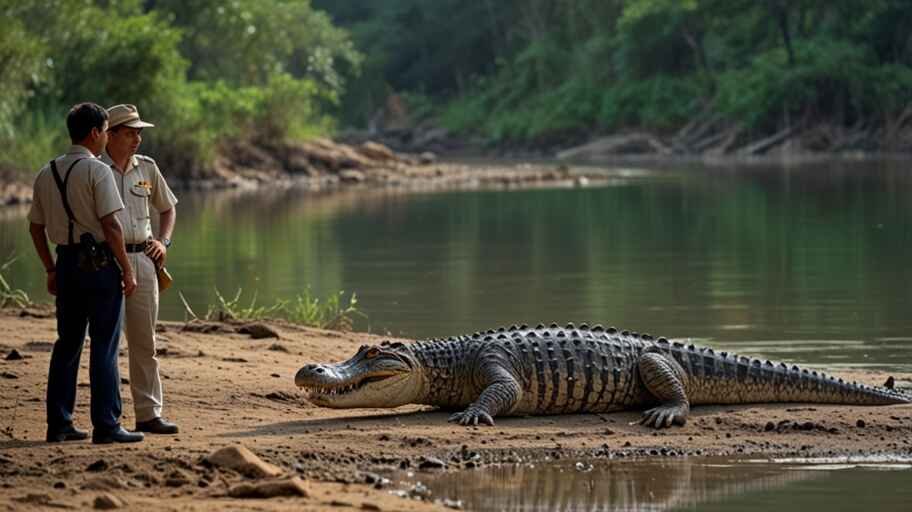Mugger Crocodile Introduction:
The Mugger crocodile, also known as the Indian or marsh crocodile, is an iconic reptile species native to South Asia. This powerful predator is not only a fascinating subject of study but also plays a crucial role in its ecosystem. Despite its significance, the Mugger crocodile faces threats from habitat loss and poaching. In this article, we’ll explore ten incredible facts about this amazing creature, shedding light on its unique characteristics, behavior, and the ongoing efforts to protect it.

1. Unique Habitat Range
The Mugger crocodile inhabits freshwater habitats across the Indian subcontinent, including rivers, lakes, and marshes. Unlike other crocodiles, Muggers are highly adaptable and can even survive in artificial reservoirs and irrigation canals.
2. Physical Characteristics
Growing up to 13 feet in length, Muggers are stout and muscular. Their broad snout and powerful jaws allow them to capture a variety of prey, from fish to small mammals.

3. Diet and Hunting Style
Mugger crocodiles are opportunistic feeders. They employ an ambush-style hunting method, lying in wait before snapping their jaws on unsuspecting prey. Their diet includes fish, birds, and small mammals, though they have occasionally been known to consume larger animals.
4. Social Behavior
While typically solitary, Mugger crocodiles may gather in groups around abundant food sources or during the breeding season. Observing these groups reveals complex social behaviors, including vocal communication and territorial displays.

5. Breeding and Nesting
During the breeding season, female Muggers dig nests on riverbanks to lay eggs. They exhibit remarkable parental care, guarding the nest and helping the hatchlings reach the water after they emerge. The females are known to be quite protective of their young, a trait uncommon among many other reptiles.
6. Adaptations for Survival
Mugger crocodiles have incredible sensory adaptations, including specialized cells in their skin to detect vibrations in the water. These help them detect prey and potential threats, even in murky conditions.

7. Conservation Status
The Mugger crocodile is currently classified as “Vulnerable” by the IUCN, with populations declining due to habitat loss, hunting, and human conflict. Conservation initiatives in India, Sri Lanka, and Pakistan focus on habitat protection and human-crocodile conflict mitigation.
8. Human Interaction and Conflict
Living close to human settlements can sometimes result in conflict, especially in areas where livestock and crops are affected. Conservationists work to educate communities on peaceful coexistence and reduce the risk of crocodile-related incidents.

9. Importance in the Ecosystem
As apex predators, Mugger crocodiles play a vital role in controlling populations of fish and other animals. Their presence indicates a healthy aquatic ecosystem, and they contribute to biodiversity by maintaining ecological balance.
10. Global Awareness and Conservation Efforts
Organizations and wildlife reserves across South Asia are actively working to ensure the survival of the Mugger crocodile. Through awareness campaigns and ecotourism, they aim to engage communities and inspire appreciation for this resilient reptile.
Conclusion:
The Mugger crocodile is a remarkable species, embodying resilience, adaptability, and ecological significance. Protecting this species is crucial for maintaining the health of freshwater ecosystems in South Asia. By understanding their behavior and challenges, we can support conservation efforts and ensure that future generations will have the chance to marvel at these incredible creatures.

